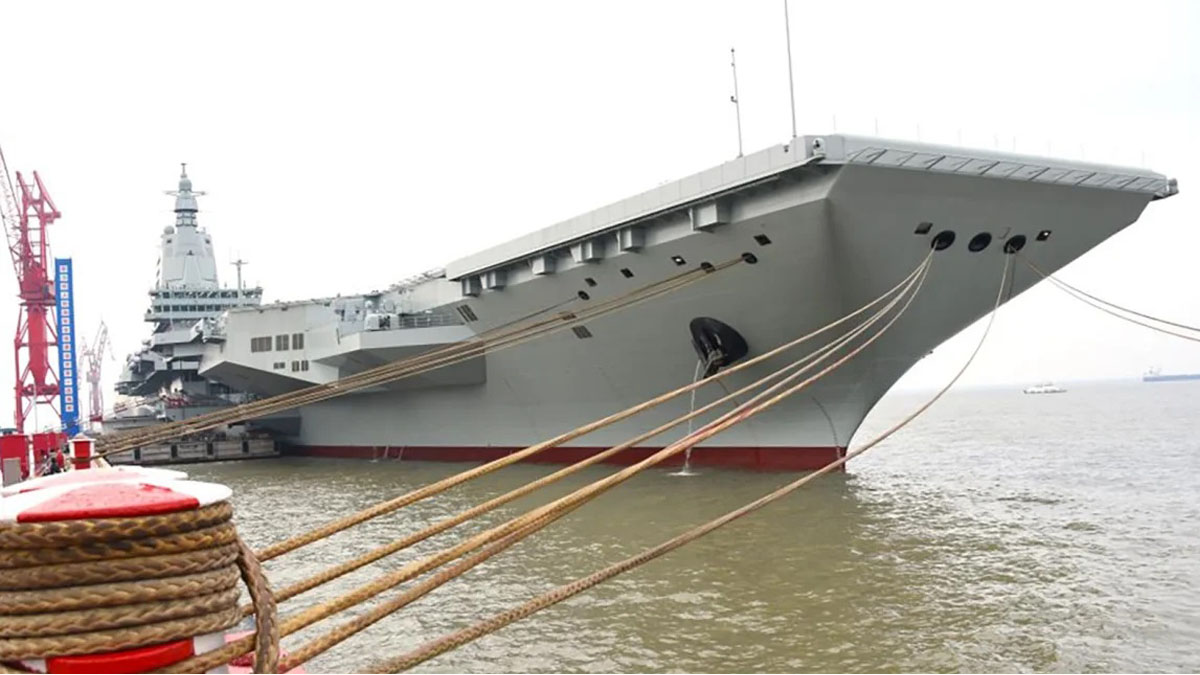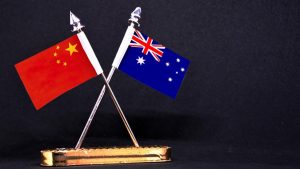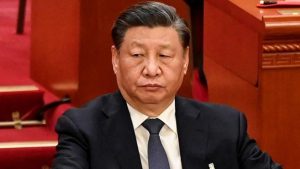
China’s Display of Force: New Aircraft Carrier Challenges Regional Stability

The geopolitical dynamics of the Indo-Pacific region have reached a new level of complexity as China continues to assert its maritime power through the expansion of its naval capabilities and contentious interactions in regional waters. The recent introduction of China’s most advanced aircraft carrier, coupled with increasing tensions with neighboring countries over maritime sovereignty, underscores the shifting balance of power and the escalating military focus in the region.
China’s Advancements in Naval Technology
China’s latest aircraft carrier is a significant leap in technological capability compared to its predecessors, the Liaoning and the Shandong. Collin Koh, a senior fellow at the S. Rajaratnam School of International Studies in Singapore, noted that this new carrier incorporates electromagnetic catapults, a sophisticated technology that the United States first adopted with the USS Gerald R. Ford. These catapults mark a pivotal enhancement over the older ski-jump deck designs, enabling aircraft to carry heavier payloads and thereby generating more combat power.
The addition of electromagnetic catapults addresses the limitations previously faced by Chinese carriers. By allowing aircraft to launch with maximum payloads, the operational efficiency and effectiveness of China’s naval aviation are expected to increase significantly. However, these systems are also highly power-consuming, posing a challenge in terms of power management and efficiency. The effectiveness of this technology will largely depend on China’s ability to optimize power usage without compromising the carrier’s performance capabilities.
Strategic Expansion and Regional Response
China’s ambitious naval expansion plans include a fleet of six aircraft carriers by 2035. This rapid development indicates China’s intent to establish a dominant presence in both the Pacific and Indian Oceans. Furthermore, the Chinese navy is accelerating the construction of guided missile destroyers to protect these carriers, indicating a comprehensive strategy to enhance its blue-water naval capabilities.
Regional powers, notably Japan, have expressed concerns about China’s maritime ambitions. The Japanese Ministry of Defense has reported an increase in China’s naval and aerial activities near the Senkaku Islands and other critical areas in the Pacific Ocean. In response, Japan and other East Asian nations are ramping up their defense expenditures, reflecting heightened security concerns over China’s maritime assertiveness.
Incidents and International Relations
Recent incidents in the South China Sea have further strained China’s relations with its neighbors. Notably, the Philippine Coast Guard reported aggressive maneuvers by Chinese vessels near Scarborough Shoal, including the use of water cannons that damaged Philippine vessels. China’s Foreign Ministry has defended these actions, stating that the Philippine vessels had entered the area without permission, a claim that complicates the already tense maritime disputes in the region.
These events occur against a backdrop of a 2016 ruling by the International Court of Arbitration, which found against China’s expansive claims in the South China Sea under the United Nations Convention on the Law of the Sea. Despite this, China continues to assert its claims, disregarding international legal verdicts.
Regional Security Collaborations
The growing assertiveness of China has prompted closer security collaborations among Indo-Pacific nations. A notable development is the trilateral leaders’ summit between the U.S., Japan, and the Philippines, held for the first time in Washington, which promised ongoing cooperation and more summits in the future. Furthermore, defense ministers from these countries, along with Australia, are scheduled to meet in Hawaii for continued security discussions. These meetings reflect a collective regional response to China’s actions and a commitment to ensuring stability and adherence to international law in the Indo-Pacific waters.
Conclusion
China’s naval advancements and its aggressive posture in regional waters are reshaping the strategic landscape of the Indo-Pacific region. As the country continues to deploy advanced military technology and expand its fleet, neighboring countries and strategic alliances are recalibrating their security strategies to address the potential threats posed by China’s ambitions. The evolving dynamics suggest that regional tensions and military preparedness will continue to characterize the Indo-Pacific geopolitical environment in the foreseeable future, with significant implications for global maritime security and international relations.
- Nepali Congress Accuses Speaker Ghimire of Favoritism Amid Parliamentary Chaos
- Chair Khatiwada vows timely change in laws on vital registration and citizenship
- Nepal has potential for economic benefit: Leader Dr Rijal
- Second Phase of Kathmandu Ring Road: Project Site in Dire Straits, Chinese Firm Yet to Arrive














Comments